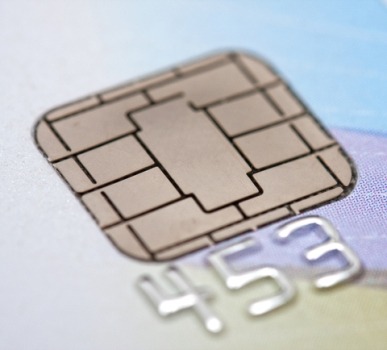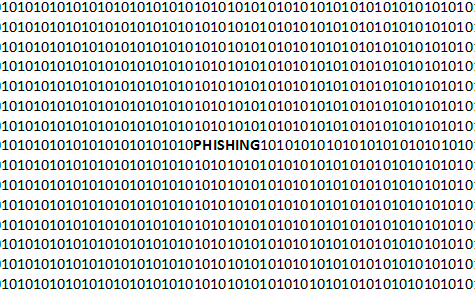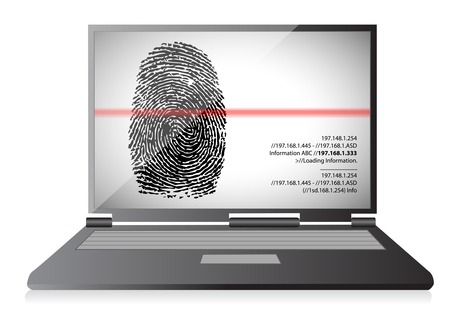7 Things You Can Do To Protect Your Identity
One of my favorite commercials is a guy working out with his personal trainer. The trainer asks him if he’s been eating his vegetables every day. When he replies, “When I can,” the trainer bops him on the head. He could have had a V8!

Just like the man thought that eating his daily vegetables would be hard, sometimes protecting your identity seems like a chore. But it doesn’t have to be that way. Here are 7 “duh” steps you can take to protect your identity this holiday season and all year round.
- Inspect credit card statements. Make a habit of regularly looking through your credit card statements for strange looking activity. If you notice just one unauthorized charge, assume that someone out there will strike again, and again and again—unless you take immediate action and contact your credit card company.
- Shred documents with personal information. Thieves will rummage through your garbage and recycling searching for intact documents that show Social Security numbers, credit cards and bank account information, etc. The next best thing to a cross-cut shredder is scissors. Shear up anything that could be revealing, including credit card purchase receipts.
- Review your credit reports. At least once a year, review your credit reports from the three major bureaus. This way you’ll be able to spot any suspicious actions, such as a thief opening a credit card account in your name.
- Credit freeze. If you’ve been a victim of identity theft, you might want to consider putting a freeze on your credit.While this will prevent you from getting loans or credit cards until you unfreeze it, this will also block criminals from opening accounts in your name and smearing your credit.
- Limit accessibility. In addition to using a shredder or scissors, consider getting a safe where you can store sensitive documents and limit the number of credit cards you carry with you. Have a list of important phone numbers (e.g., bank, credit card companies) already made up, in the event that you need to contact them immediately upon realizing you have lost or someone has stolen your identity or your physical credit cards, wallet, etc.
- Password protection. If your device is lost or stolen, will someone be able to simply pick it up and access all your data? They won’t if it is password protected. Don’t use your cat’s name as your password; rather create a complicated password with upper and lower-case letters and numbers.
- Use comprehensive security software. It is essential that all your digital devices have updated security software, like McAfee LiveSafe™ service that can safeguard your data and protect against identity theft.
For more tips on protecting your identity, check out the Intel Security Facebook page or follow them on Twitter.
Robert Siciliano is an Online Security Expert to McAfee. He is the author of 99 Things You Wish You Knew Before Your Mobile was Hacked!
Russian Hackers getting rich from your Identity
Where’s the $$$ at? Selling credit card data. Have you heard of the Russian hacking ring that raked in two and a half billion dollars? Check it out:

- Phishing attacks are lucrative for these cybercriminals.
- ATM hacks continue to increase, in part due to targeted attacks and new software.
- Smartphone attacks are on the upswing.
There are three ways criminals obtain credit card data, and selling it is enormous business. And data breaching at the point of sale has been a big issue for the past few years. POS attacks are conducted with skimming tactics or by using Trojans. Unless significant changes are made, look for POS attacks to swell up, not shrivel up.
Selling credit card information is such big business that there exist professional wholesalers who specialize in this. Ukrainian, Russiona and many in eastern Europe are some of the largest brokers of and the main suppliers of stolen card data. But the wholesalers who purchase his acquired data are also rolling in the dough.
More on the Russian Hacking Empire
- Lots of DDoS attacks
- Over a quarter of a billion dollars in the sale of nefarious products
- Spam, spam and more spam: an $841 million goldmine
- A rise in the number of crime rings, the result of the development of new ways to commit theft off of users of smartphones.
- In fact, several new crime rings have emerged this year that center on bank theft of mobile device users.
There’s currently just no end in sight for the Russian hackers, and there perhaps never will be, especially since geography is a barrier to prosecution.
6 ways to watch your statements.
- Monitor your paper statements monthly
- Monitor your e-statments when they come in
- Login to your credi card company’s website as often as you can
- Download your credit card company’s smartphone app and check often
- Sign up for Mint or BillGuards credit card alerts
- Go to your credit card company’s website and sign up for text and email alerts for every transaction.
Robert Siciliano is an identity theft expert to BestIDTheftCompanys.com discussing identity theft prevention. For Roberts FREE ebook text- SECURE Your@emailaddress -to 411247.
Chip and PIN vs. Chip and Signature Cards
The planet’s most powerful nation is sure backwards when it comes to the payment card industry: Why has America been using 1970s technology as of the posting date of this article? That magnetic strip on credit and debit cards has GOT to go already! And thank goodness, the transition to chip technology is more imminent than ever.

For those of you out of the loop, the stripe makes it ridiculously easy for cyber thieves to commit all sorts of crimes. (Remember Target?) The chip in most cases will trip them up on this.
Chip-and-PIN technology is better than chip-and-signature. However, the chip-and-signature is taking a much stronger root in America than the PIN version. The signature version’s most obvious drawback is that it’s useless in all the other nations where PIN technology rules.
Additional Problems with Chip ‘n Signature
- A signature can be forged.
- The card can be intercepted prior to transaction completion.
- Will be very costly to convert the current stripe technology to signature—but the investment will not offset the cost due to the inherent weaknesses in signature-based technology.
- Consumers, thinking that the “chip” part of the signature version means great security, will be miffed once they realize how vulnerable signature actually is.
Benefits of Chip ‘n PIN
- The card issuer must assign the personal identification number prior to mailing the card to the user; the user must reset the PIN at a branch. Just like a debit card. Easy.
- Makes it really difficult for criminals to use a person’s credit or debit card in a fraudulent way. A most obvious example is that if a thief steals or finds a lost credit card…and tries to make a purchase…he’ll come to a dead end when it’s time to enter the PIN.
Drawbacks of Chip ‘n PIN
- Will cost an arm and a leg to implement on a universal scale, and unfortunately, funds are already being diverted to switch over to the signature technology rather than the chip.
Solutions to the Signature Problem
- To nab or prevent imposters from making that signature, certain technologies like geo-location can be implemented to determine if the customer is the real owner of the card. There’d be multiple technologies in place for verifying ownership.
- The transaction can require voice biometrics with a smartphone: The system will approve the purchase only when the card user’s voice is identified as that of the real owner.
- The second point here would be contingent on authenticating the smartphone.
But all that seems a little complicated an unnecessary. We really should just use the Chip and Signature. Or how about we just use Apple Pay!
Robert Siciliano is an Identity Theft Expert to Hotspot Shield. He is the author of 99 Things You Wish You Knew Before Your Identity Was Stolen See him discussing internet and wireless security on Good Morning America.
It’s Beginning to Look a Lot Like the Holiday Shopping Season
The holiday season is in full force. Not only is it time to bring out the tinsel while jamming out to holiday music, it’s also time to buckle down on your holiday shopping. Have you made your holiday shopping list yet? Luckily, in the U.S., the biggest shopping days of the year are coming up meaning lots of shopping deals at stores on and offline to help you complete your holiday shopping list.

There are people out there who are really gung-ho about Black Friday—camping outside a department store the night before and fighting the masses for the half-price widescreen tv. That’s not really my style; I’m more of a Cyber Monday kind of guy. I just fire up my computer or tablet and start clicking and then boxes magically arrive at my house…well maybe not magically.
Online shopping is convenient for the holiday shopper. No lines, no braving the sometimes nasty winter weather, no crowds—you can buy almost anything and never leave your couch. Although online shopping is a great way to complete your holiday shopping list, you should take a couple precautions while online to keep your personal and financial information safe from hackers. Along with avoiding the 12 Scams of the Holidays, here are the top 5 tips to help you stay safe while shopping online this holiday season.
- Be wary of deals. Does that 90% off blowout sale of iPhones sounds too good to be true? It probably is. Any offer you see online that has an unbelievable price shouldn’t be believable. Beware of spam emails with links to awesome deals, as it’s particularly dangerous to buy on a site advertised in a spam email. I recommend using web protection, like McAfee® SiteAdvisor® provides easy to results to protect you from going to a malicious website.
- Use credit cards rather than debit cards. If the site turns out to be fraudulent, your credit card company will usually reimburse you for the purchase; and in the case of credit card fraud, the law should protect you. With debit cards, it can be more difficult to get your money back and you don’t want your account to be drained while you’re sorting things out with your bank. Another option savvy shoppers sometimes use is a one-time use credit card, which includes a randomly generated number that can be used for one transaction only. If the number is stolen it cannot be used again. Using this type of credit card also ensures that a thief does not have access to your real credit card number.
- Review the company’s policies. Look to see how the merchant uses your personal information and check to make sure that it will not be shared with third parties. You should only disclose facts necessary to complete your purchase and not any additional information about yourself. Also, check the website’s shipping policy and make sure it seems reasonable to you. You want to make sure that you understand all your shipping options and how they will affect your total cost of your online purchase.
- Check that the site is secure. Find out if a company’s website is secure by looking for a security seal, like the McAfee SECURE™ trustmark, which indicates that the site will protect you from identity theft, credit card fraud, spam and other malicious threats. Make sure the site uses encryption—or scrambling—when transmitting information over the Internet by looking for a lock symbol on the page and checking to make sure that the web address starts with httpS://.
- Only use secure devices and connections. If you are using a public computer, information such as your browsing history and even your login information may be accessible to strangers who use the computer after you. Also, never shop using an unsecured wireless network because hackers can access your payment information if the network is not protected. To protect yourself, do all of your online shopping from your secure home computer. When shopping at home, make sure all your devices are protected with comprehensive security like McAfee LiveSafe™ service which protects all your PCs, tablets and smartphones.
Robert Siciliano is an Online Security Expert to McAfee. He is the author of 99 Things You Wish You Knew Before Your Mobile was Hacked!
Identity Theft of the Dead affects the Living
You don’t have to be living to have your identity stolen. Every year in America there’s 2.5 million cases of ID theft involving the deceased. And while your first reaction might be “So what, I’ll be dead and I won’t care”, you need to keep in mind that identity theft of the dead often significantly affects the living. How can this be prevented or at least, minimized?

Shut Down Social Media
Though it’s hard to do, closing down the decedent’s Facebook page will contribute to preventing ID theft.
Contact the Social Security Administration
This agency has a “death master file” of the SS numbers of deceased people that should be rendered inactive. This way a thief can’t use the number. Don’t wait for a funeral director to do this (though that’s their job); do it yourself for faster results.
Obits
When composing an obituary, people should post very little information. Crooks actually read these in search of a possible ID theft victim. The information to leave out includes names of survivors, complete addresses and professional history.
Receiving Bills
If a decedent’s identity has been hijacked, a survivor may begin receiving bills in that person’s name…and eventually, calls from collection agencies. “The problem isn’t so much financial -- it’s emotional,” says Maria Cordeiro with the Chubb Group of Insurance Companies in an article from business-news.thestreet.com. You may have to be dragged through the pain of proving that your deceased loved-one is, in fact, no longer around.
How do you fix this problem?
- Get all the needed documentation together, because you’ll need to send it out to any entity that requires it for proof.
- Obtain a credit report prior to the person’s death. Of course, this works in cases of a diagnosed terminal condition versus accident. Once you have the person’s credit report, then six months after death, obtain another for comparison, says Cordeiro. The decedent’s name and SSN, six months later, should be in the death master file.
- Do some credit monitoring. This is easier than obtaining a credit report for someone who’s dead.
- Do a credit freeze. For a small fee, the credit report gets frozen shut, preventing a thief from opening a new account.
Robert Siciliano is an identity theft expert to BestIDTheftCompanys.com discussing identity theft prevention. For Roberts FREE ebook text- SECURE Your@emailaddress -to 411247.
How to win the War on Phishing
A phishing attack is a trick e-mail sent randomly to perhaps a million recipients, and the thief counts on the numbers game aspect: Out of any given huge number of people, a significant percentage will fall for the trick.

The trick is that the e-mail contains certain information or is worded in such a way as to get the recipient to click on the link in the message. Clicking on the link brings the user to a website that then downloads malware.
Or, the website is made to look like it’s from the user’s bank or some other major account, asking for their account number and other pertinent information like passwords and usernames; they type it in (and it goes straight to the thief). Sometimes this information is requested straight in the e-mail’s message, and the user sends the information in a direct reply.
The Google Online Security Blog did some analysis of phishing e-mails and came up with the following:
Malicious websites really do work: 45 percent of the time. As for getting users to actually type in their personal information, this happened 14 percent of the time. Even very fake looking sites went over the heads of three percent. Three percent sounds like peanuts, but what’s three percent of one million?
Hasty hackers. Once the hacker gets the login information, he’s into the victim’s account within 30 minutes 20 percent of the time. They may spend a lot of time roaming around in the account, which often includes changing the password to keep the victim out.
Those strange e-mails. Ever get an e-mail in which the sender is a very familiar person, but the message was also cc’d to a hundred other people? And the body message only says, “Hi there!” and then there’s a link? This is likely an e-mail from the victim’s e-mail account (which the hacker knows how to get into), and the thief copied everyone in the victim’s address book. Recipients of these phishing attacks are 36 percent more likely to fall for the ruse than if the attack comes as a single message from an unfamiliar sender.
Fast adaption. Phishing specialists are good at quickly changing their strategies to keep up with changes in security.
The Google Online Security Blog recommends:
- Not all “spam blockers” block 100 percent of all the phishing e-mails. Some will always slip through to your in-box. Never send personal information back to the sender of e-mails requesting personal information. Never visit the site through the link in the e-mail.
- Use two-step verification whenever an account setup offers it. This will make it difficult for the hacker to get into your account.
- Make sure your accounts have a backup e-mail address and phone number.
Robert Siciliano is an identity theft expert to TheBestCompanys.com discussing identity theft prevention. For Roberts FREE ebook text- SECURE Your@emailaddress -to 411247.
Mobile Employees Are a Security Risk
Not too long ago, the office computer filled an entire room. Now, it fills the palms of one-third of employees—those workers who use only the mobile device for their jobs. Security, however, lags behind in keeping up with this growing trend. This is the BYOD generation: bring your own device (to work).

IT departments need to keep one step ahead of this fast-growing trend. It’s here to stay, and one reason is because it’s responsible for significantly pumping up productivity. Employers love this. More productivity = higher profits. You’d think that some of these increased profits would be reinvested in security training that correlates to the BYOD movement, since the BYOD movement strongly correlates with an increase in data breaches and risks of breaches.
But it’s not. Organizations still aren’t seeing the light.
A recent Ponemon Institute survey reveals that for a large portion of employees, the mobile device is a first-line medium for conducting business. That one-third figure mentioned earlier is forecasted to jump to 50 percent over the next 12 months.
With all the improvements in productivity comes a corresponding jump in the risks of data breaches—both intentional and accidental. The survey reveals that 52 percent of the participants said that security training for smartphones was shelved in the name of sharpening worker productivity.
Another finding: One-third of businesses don’t even have existing security programs for the BYOD’ers. About three-quarters of respondents said that their existing security was lax. And don’t think that security risks mean only computer viruses, phishing e-mail scams, being lured to malicious websites, being tricked into downloading malware, etc.
There’s a huge risk in the form of roving eyes. A “visual hacker” uses his eyes, and sometimes with the assistance of binoculars or a mobile device camera, to prowl for unguarded computer screens in public like at airports, hotels and coffee houses. He swipes sensitive data by recording it with a camera or seeing it and then writing down what he sees or even memorizing it. Workers can prevent “shoulder surfing” with the ePrivacy Filter software by the 3M company. Combine this software with a 3M Privacy Filter, and the user will be able to thwart a hacker hovering over his or her shoulder from virtually any angle.
The typical business, says the survey, handles 20,000 mobiles, and that number is fast-rising. This will heap on the pressure to implement solid security plans. Managing each device won’t be cheap, either, but a pricey stitch in time will save an obscene expense times nine.
Sixty percent of the survey takers said that mobiles have made employees rather lazy with security awareness. There’s definitely a human factor involved with all of this that businesses must address.
If employees want to use mobiles to conduct business, they should also embrace the responsibility that comes with the use of these devices—that of being willing to learn how to keep the sensitive data that’s stored in these devices safe, and also being willing to learn how to recognize social engineering and other cyber criminal tricks.
Robert Siciliano is a Privacy Consultant to 3MdiscussingIdentity Theft and Privacy on YouTube.
10 Tips to avoid Scams when traveling
Vacationers and tourists provide a vast feeding ground for all sorts of crooks: from the simple pick-pocketing specialist to the hotel room burglar to the e-thief: credit card skimming and computer crimes. You can even have your identity stolen while sunning on that white beach.
Avoid Traveling Scams with These Tips
- Don’t post your vacation or other travel plans on social media. Thieves peruse social media to see who will be out of town and when.
- Protection begins before the trip. Put a vacation hold on your snail mail.
- Beware of hotel room scams. A person posing as front desk staff will call random hotel rooms to sucker travelers into giving up their credit card number. Never give private information over the hotel phone.
- When using public Wi-Fi, encrypt your activities so that hackers can’t pluck them out of the air.
- Always know where your mobile phone is, and have it protected with a password.
- Must you always pay with a credit or debit card? Cold cash can’t be hacked into. But I still prefer credit over debit cards (and even cash).
- Don’t withdraw more cash than you need. Don’t take out wads of high bills because you “might” spend a lot of money. And use an ATM at a bank, not a public kiosk.
- When you do use a card (credit, not debit!), do not let the server or sales clerk walk out of your sight with it. You just never know who might be an “inside” thief.
- As soon as you can upon returning from traveling, check your credit card statements for suspicious activity.
- Leave the expensive jewelry, handbags, etc. at home. A thief has a lot of interest in a well-dressed person who acts like a tourist. If you want everyone to see how exorbitantly styled you are, you’ll have to include muggers and other thieves in that group.
Robert Siciliano is an identity theft expert to BestIDTheftCompanys.com discussing identity theft prevention. For Roberts FREE ebook text- SECURE Your@emailaddress -to 411247.












